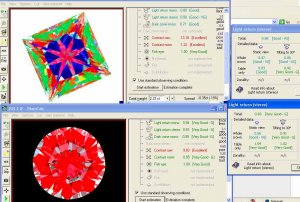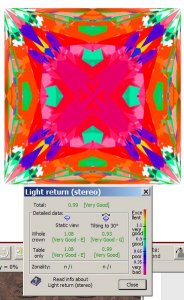- Joined
- Sep 3, 2000
- Messages
- 6,751
Clearly,consensus on this subject is a distant dream, but a very good one. Having had a good deal of experience with using highly technical light return measuring equipment,I believe it would be fair to say that maximized light return characteristics do not equate to maximization of beauty. People simply see differently and have their own sense of what suits them as the best and prettiest. We can surely give technical people direct measurements, handy tools and ray tracing analysis, but just having maximum measures does not insure the diamond is the best one for any individual. Maybe we will someday grade based on these light return characterisitics, but it is a good argument that beauty remains subjective and what we can grade are objective facts which may assist consumers to locate a stone which is right for them. Just as not everyone needs or wants a D-IF, not everyone wants a maximized light return diamond.











300x240.png)